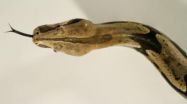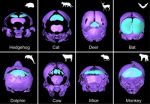(Press-News.org) Two papers that will appear in the journal Molecular Psychiatry, both receiving advance online release, may help identify gene variants that contribute to the risks of developing obsessive-compulsive disorder (OCD) or Tourette syndrome (TS). Both multi-institutional studies were led by Massachusetts General Hospital (MGH) investigators, and both are the first genome-wide association studies (GWAS) in the largest groups of individuals affected by the conditions.
"Previous studies of these disorders have demonstrated that both TS and OCD are strongly heritable and may have shared genetic risk factors, but identification of specific genes has been a huge challenge," says Jeremiah Scharf, MD, PhD, of the Psychiatric and Neurodevelopmental Genetics Unit (PNGU) in the MGH Departments of Psychiatry and Neurology, a co-lead author of both papers and co-chair of the Tourette Syndrome Association International Consortium for Genetics. "These new studies represent major steps towards understanding the underlying genetic architecture of these disorders."
An anxiety disorder characterized by obsessions and compulsions that disrupt patients' lives, obsessive-compulsive disorder (OCD) is the fourth most common psychiatric illness. Tourette syndrome, a chronic disorder characterized by motor and vocal tics, usually begins in childhood and is often accompanied by conditions like OCD or attention-deficit hyperactivity disorder. Both conditions have a high risk of recurrence in close relatives of affected individuals, but previous studies that compared affected and unaffected individuals were not large enough to identify specific genes or areas of the genome that contribute to risk.
Since many gene variants probably contribute to risk for both conditions, the research teams undertook GWAS investigations, which analyze hundreds of thousands of gene variants called SNPs (single-nucleotide polymorphisms) in thousands of individuals with and without the condition of interest. The International OCD Foundation Genetic Collaborative, consisting of more than 20 research groups in nine countries, analyzed almost 480,000 SNPs in 1,465 individuals with OCD, more than 5,500 controls and from 400 trio samples consisting of an OCD patient and both parents. The Tourette Syndrome Association International Consortium for Genetics and the TS GWAS Consortium, representing 22 groups across seven countries, analyzed 484,000 SNPs across almost 1,500 cases and more than 5,200 controls.
The OCD study – led by Evelyn Stewart, MD, of the MGH-PNGU, who is now based at the University of British Columbia, and David Pauls, PhD, MGH-PNGU – identified possible associations close to a gene called BTBD3, which is closely related to a gene that may be involved in Tourette Syndrome, and within DLGAP1, a close relative of a gene that produces OCD-like symptoms in mice if it is deleted. The Tourette study was led by Scharf and Pauls and found evidence of a possible association with a gene called COL27A1, which may be expressed in the cerebellum during development, and with variants that help regulate gene expression in the frontal cortex.
None of these or other identified SNPs reached the high threshold of genome-wide significance, which would indicate that the associations represented true risk factors, and the authors stress that additional, larger studies are required. "Although GWAS analysis allows much more comprehensive examination of the entire genome than do studies focused on particular families or candidate genes, these two studies are still underpowered and should be interpreted with caution," says Pauls, a co-senior author of both papers. "The current results are interesting and provide us with a starting point for analyzing future studies that must be done to replicate and extend these findings."
Scharf adds that the next steps should include testing the SNPs identified by these studies in other groups of patients and controls, analyzing both study groups together to identify genes that contribute to the risk of both disorders, and expanding international collaborations to increase the size and power of patient samples for both OCD and TS. "If future studies confirm that some of these variants do contribute to risk – either directly or by altering the function of other risk genes – that would suggest both novel disease mechanisms and might give us new treatment targets," he says.
###
Scharf is an assistant professor of Neurology, Stewart a lecturer on Psychiatry and Pauls a professor of Psychiatry at Harvard Medical School. Support for both studies includes grants from the National Institutes of Health, the Tourette Syndrome Association, the David Judah Fund and the McIngvale Fund.
Massachusetts General Hospital (www.massgeneral.org), founded in 1811, is the original and largest teaching hospital of Harvard Medical School. The MGH conducts the largest hospital-based research program in the United States, with an annual research budget of more than $750 million and major research centers in AIDS, cardiovascular research, cancer, computational and integrative biology, cutaneous biology, human genetics, medical imaging, neurodegenerative disorders, regenerative medicine, reproductive biology, systems biology, transplantation biology and photomedicine. In July 2012, MGH moved into the number one spot on the 2012-13 U.S. News & World Report list of "America's Best Hospitals."
First GWAS studies of obsessive-compulsive disorder and Tourette syndrome published
2012-08-14
ELSE PRESS RELEASES FROM THIS DATE:
GWU consensus report outlines new approaches for evaluating benefits and risks of obesity drugs
2012-08-14
WASHINGTON, D.C. – The George Washington University School of Public Health and Health Services (GW) today released a report representing consensus findings from a cross-section of stakeholders that could help transform the process used to evaluate interventions to treat obesity, a public health crisis that now affects one in three adults. The report, "Obesity Drug Outcome Measures," results from a stakeholder dialogue group convened by GW that, over a period of nine months, explored why development and approval of obesity drugs have proven so difficult.
"At a time when ...
Potent human toxins prevalent in Canada's freshwaters
2012-08-14
Ottawa, Ontario (August 14, 2012) – Nutrient pollution, one of the greatest threats to our freshwater resources, is responsible for the algal blooms that blanket our lakes and waterways in summer months. Large blooms of cyanobacteria ('blue green algae') can cause fish kills, increase the cost of drinking water treatment, devalue shoreline properties, and pose health risks to people, pets, and wildlife. A new paper just published in the Canadian Journal of Fisheries and Aquatic Sciences shows that microcystin, a toxin produced by cyanobacteria, is present in Canadian lakes ...
Mysterious snake disease decoded
2012-08-14
A novel virus has been identified as the possible cause of a common but mysterious disease that kills a significant number of pet snakes all over the world, thanks to research led by scientists at the University of California, San Francisco (UCSF)—and three snakes named Juliet, Balthazar and Larry.
The virus, previously not thought to infect snakes at all, appears to cause "inclusion body disease." Long the bane of zoo officials and exotic pet owners, the deadly illness spreads among boas and pythons in captivity, causing micro clumps of clustered proteins to form inside ...
Moffitt Cancer Center researchers discover how cancer cells 'hijack' a mechanism to grow
2012-08-14
Researchers at Moffitt Cancer Center and colleagues at the University of South Florida have discovered a mechanism that explains how some cancer cells "hijack" a biological process to potentially activate cell growth and the survival of cancer gene expression.
Their study appeared in a recent issue of Nature Structural & Molecular Biology.
The newly discovered mechanism involves histones (highly alkaline proteins found in cells that package and order DNA), and in this case, histone H2B, one of the five main histone proteins involved in the structure of chromatin. Chromatin ...
A vaccine for heart disease? La Jolla Institute discovery points up this possibility
2012-08-14
VIDEO:
Researchers at the La Jolla Institute for Allergy & Immunology have identified the specific type of immune cells that orchestrate the inflammatory attack on the artery wall, which is a...
Click here for more information.
SAN DIEGO – (August 14, 2012) – Most people probably know that heart disease remains the nation's No. 1 killer. But what many may be surprised to learn is that cholesterol has a major accomplice in causing dangerous arterial plaque buildup that can ...
Hinode scientists' stellar effort keeps sun mission 'burning bright'
2012-08-14
Whilst the most powerful earthquake since records began hit Japan in 2011, triggering a massive tsunami which devastated much of the country, space scientists involved in one of the 'brightest' international Sun missions continued working tirelessly at the Institute of Space and Astronautical Science in Sagamihara, Japan, to capture new data from our turbulent star.
These latest Hinode results, to be discussed in a meeting at the University of St Andrews this week (Tuesday 14 August), include new data on the structure of the Sun's coronal magnetic field, obtained whilst ...
Macabre finds in the bog at Alken Enge
2012-08-14
Guided press tour
The excavation will be open to the press on Wednesday 15 August from 13.00 to 15.30.The tour starts at Alkenvej 171, 8660 Skanderborg.
...
Ship-borne measurements show EU policies have improved air quality in harbors
2012-08-14
Sulphur dioxide emissions from shipping have sharply decreased in EU ports thanks to an EU policy which limits sulphur content in fuels for ships at berth or at anchor in ports. Scientists at the European Commission's Joint Research Centre measured key air quality parameters in Mediterranean harbours before and after the entry into force of the low-sulphur requirements in January 2010. In European harbours they found an average decrease of 66% in concentrations of sulphur dioxide, a chemical compound that poses risks to health and the environment. Measurements taken in ...
Feedback can have a negative impact on performance
2012-08-14
People who give positive encouragement and constructive criticism could be wasting their breath according to the latest research from a psychology expert at Queen Mary, University of London.
The study, published in the journal Frontiers in Neuroscience, found that when people received either positive or negative feedback about their performance on complex decision-making tasks, it made their decision making worse.
Study author Dr Magda Osman explained: "The kind of task people had to perform was difficult and demanding. So, when people received positive or negative ...
Old skull bone rediscovered
2012-08-14
The mammalian skull, including that of people, is composed of about 20 bones. Fish, reptile and bird skulls, however, have considerably more. After all, when mammals evolved from reptile-like vertebrates 320 million years ago, the skull's structure became simplified during its development and the number of skull bones decreased.
Some bones were lost in the lineage leading to mammals in the course of evolution, especially a number of skull roof bones. The skull's interparietal, which is one of the skull roof bones, particularly puzzled researchers: on the one hand, it ...


